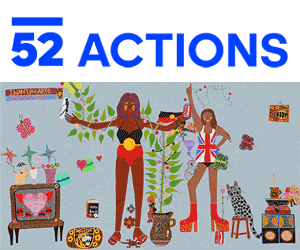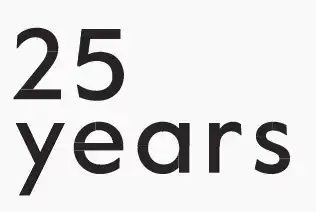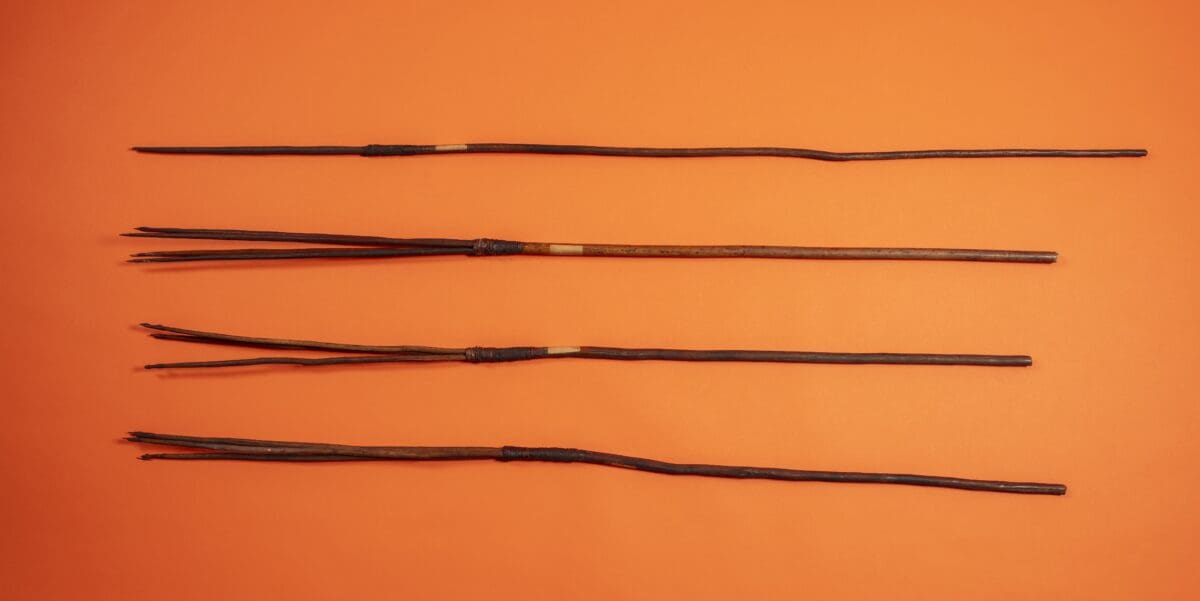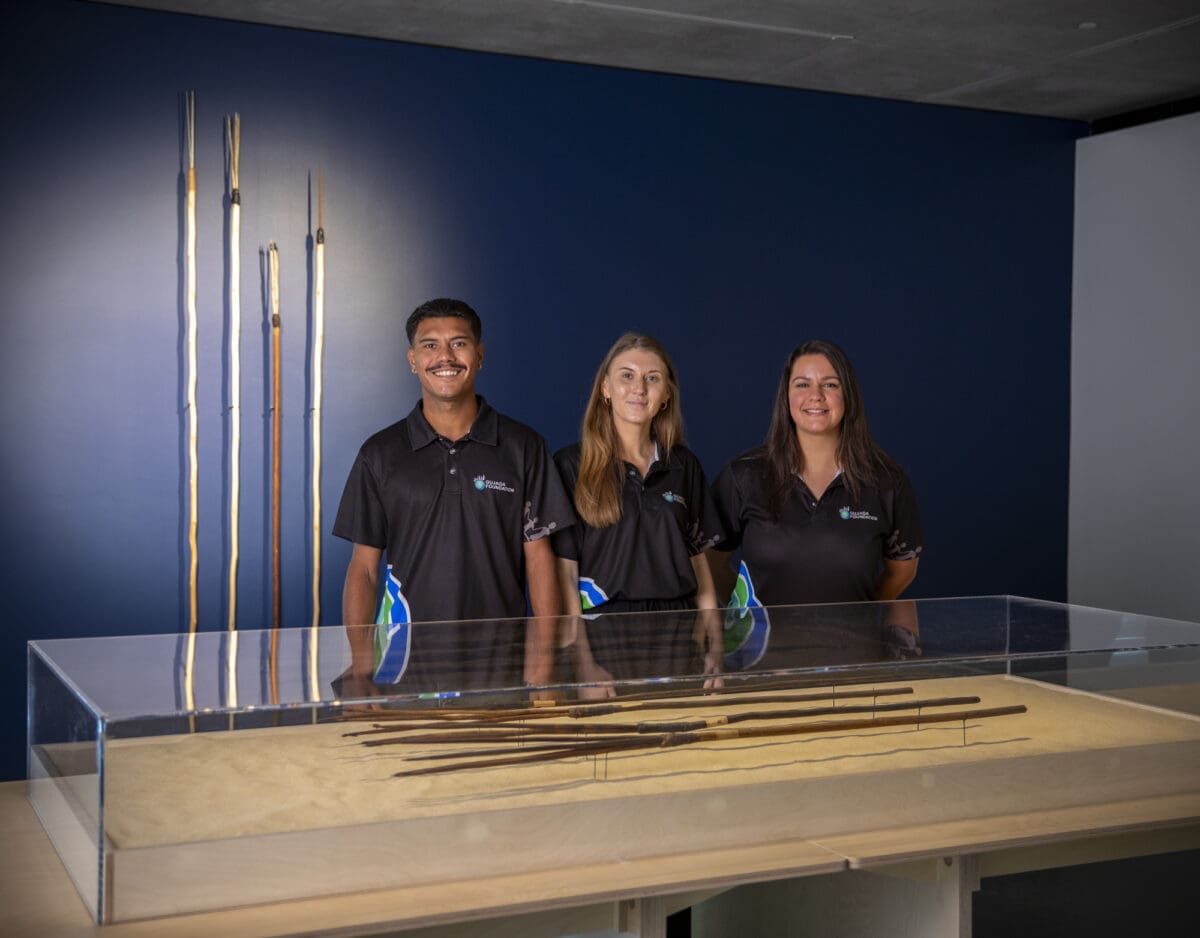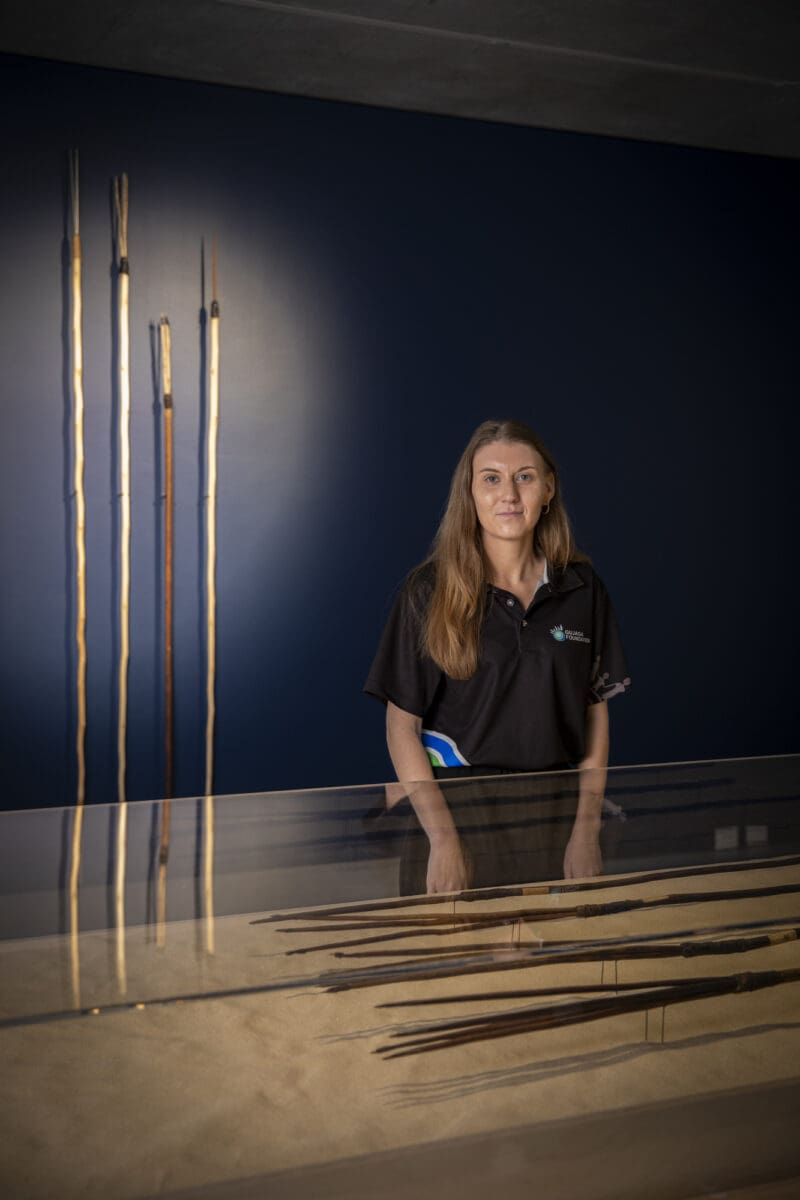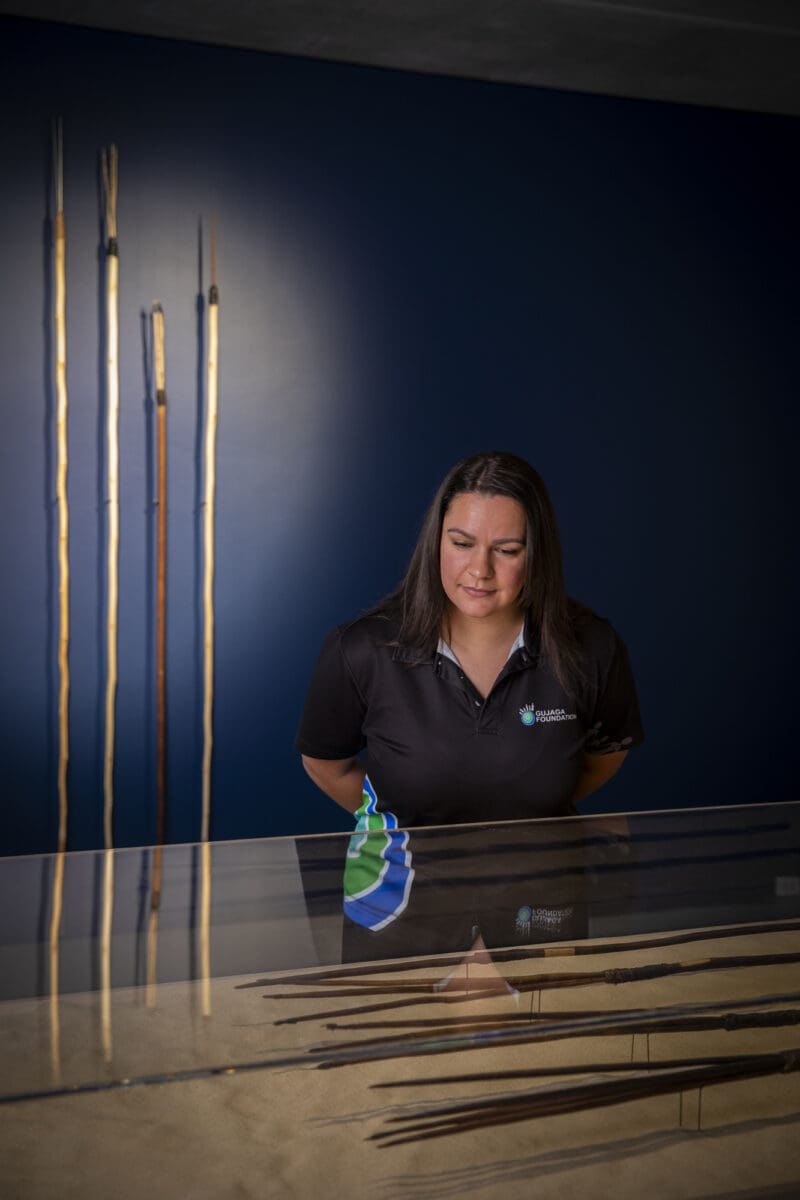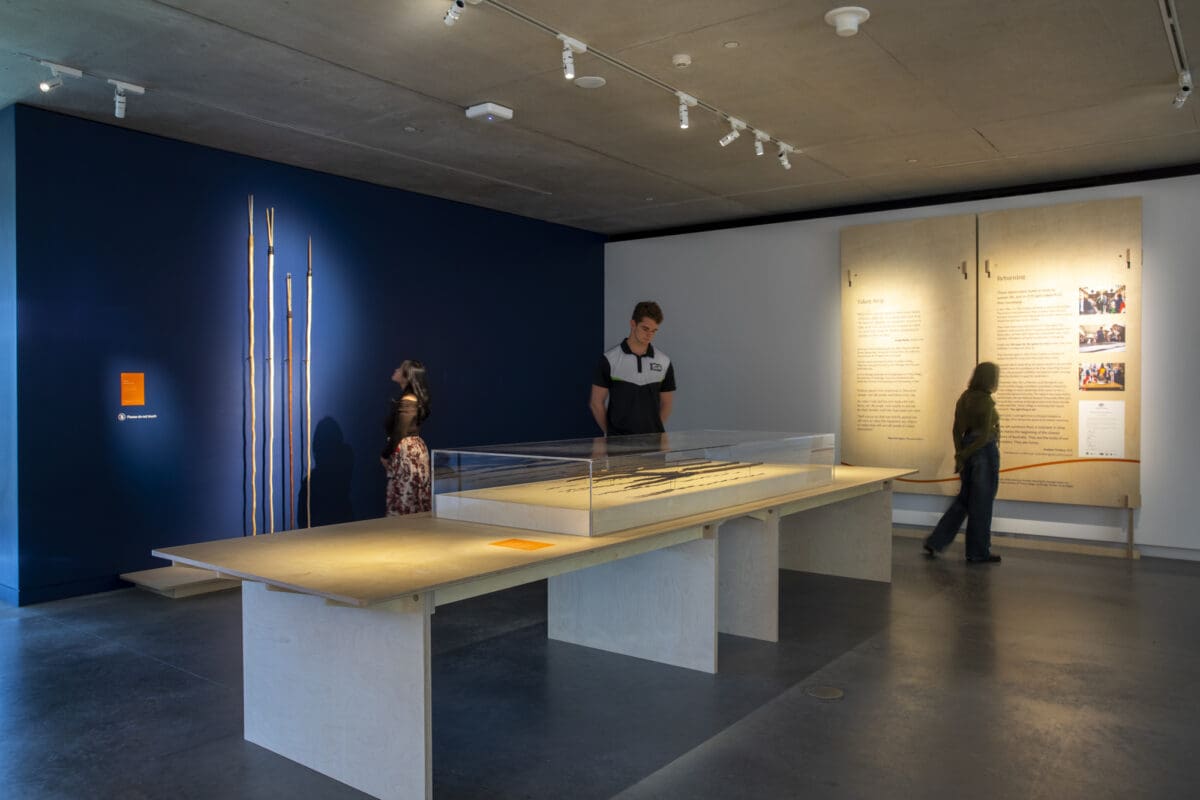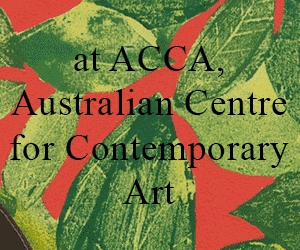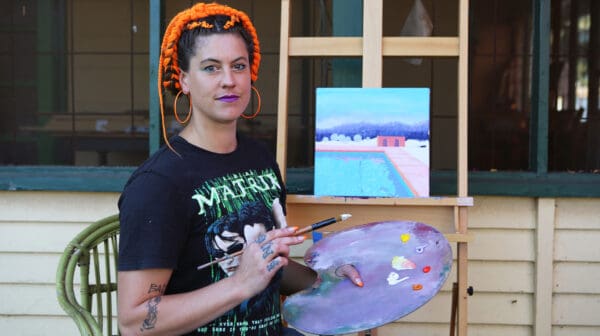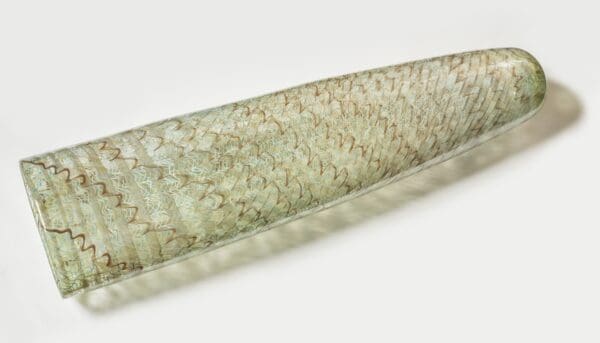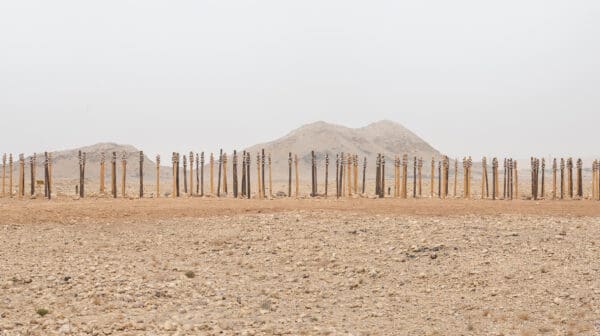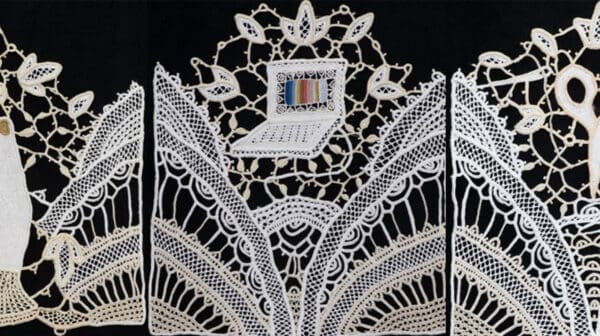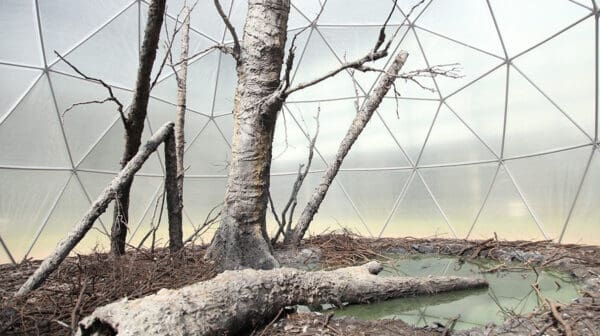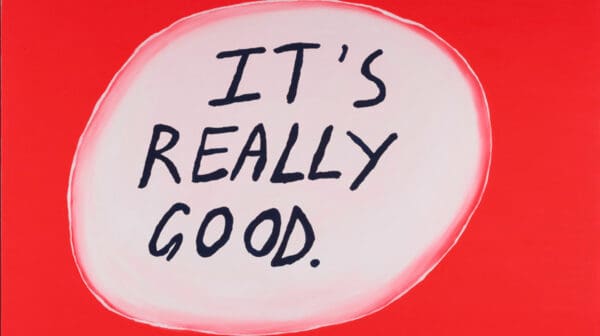The exhibition Mungari: Fishing, Resistance, Return at Chau Chak Wing Museum, Sydney, spotlights local Indigenous knowledge and uplifts the La Perouse community it represents. The walls archive the journey of the community from pre-colonial to the present, assisted by community-directed designs that speak to the cultural presence that continues to reside within the Sydney coastal region. Quips of interviews with Aunties and Uncles, Nephews and Nieces permeate the space as a video installation plays out, showcasing ceremonial smoking, continuation of spear making and reunion of descendants with the Gweagal spears, their ancestral artefacts. Many of the objects on display sit above a layer of sand covering the bottom of each case. Each item is grounded in country, reaffirming these object’s relation to place and by extension, community. Every fibre, every grain, every minute detail of craftmanship is highlighted under soft lighting amid shimmering sand.
Crafted by Gweagal clansmen of Gamay Bay (Botany Bay) these spears were items of hunting, to be used to bring in a feed and sustain a thriving community. But upon Lieutenant James Cook’s initial explorations of the east coast these tools came under his procurement after a less than stellar encounter upon the shores at Kurnell. In late 2022, the La Perouse Local Aboriginal Land Council and Gujaga Foundation submitted a request to have the spears returned. As a result, Trinity College in Cambridge, in partnership with Australian Institute of Aboriginal and Torres Strait Islander Studies and National Museum of Australia, returned the spears to the La Perouse community and indeed, all of Australia. These spears are on display until the end of June and then will return home to Kurnell.
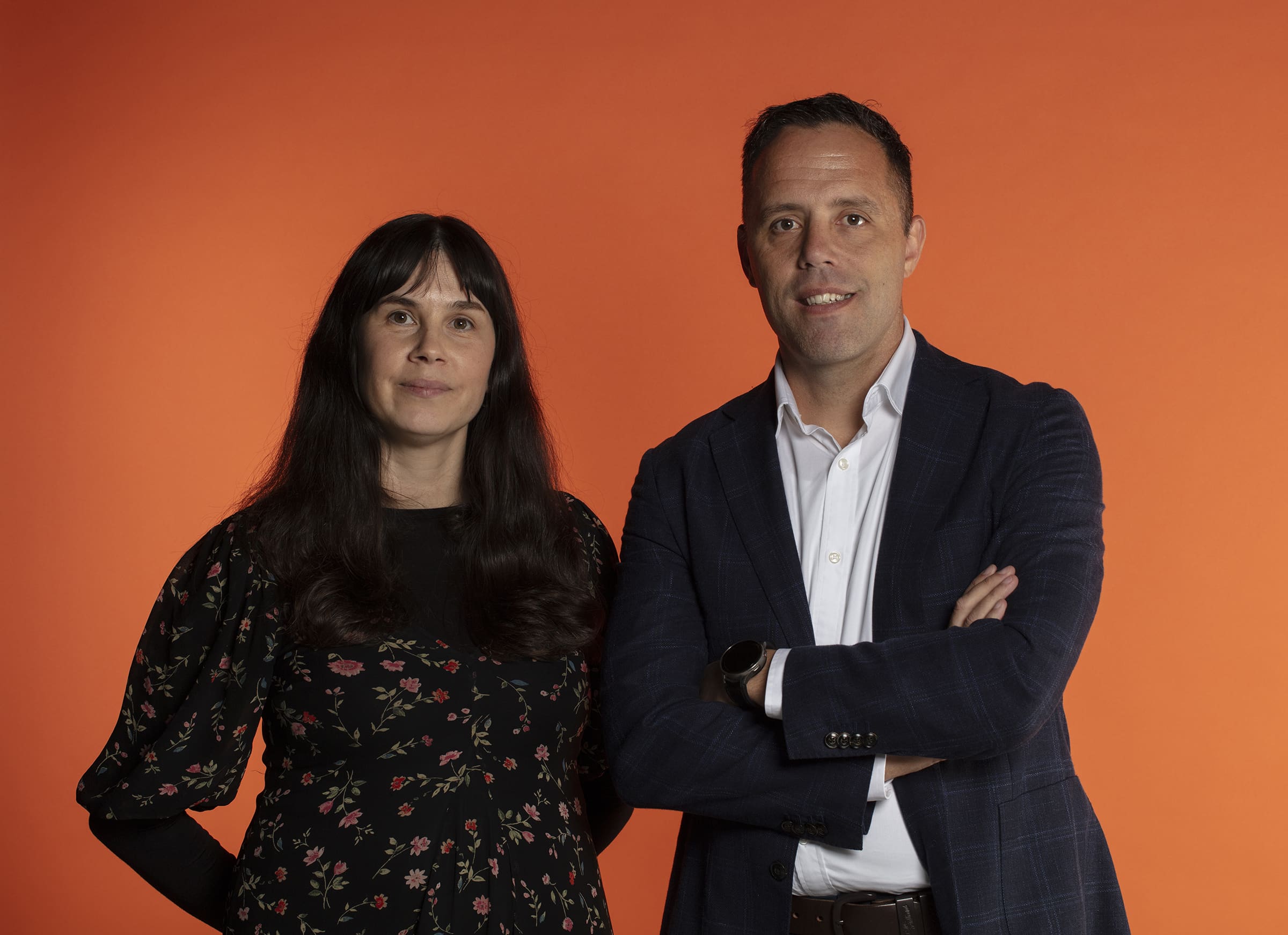
When the spears were taken back to Britain, to be sequestered away or given as gifts or fetishist idols of an ‘untouched’ land, their ghosts remained among their people here in Sydney, shared down the line in stories and family tales. This communal remembrance would culminate in the 1980s with a push by a group of La Perouse women Elders to reclaim their heritage and nurture community capacity to collaborate with institutions to regain that connection with their objects. In the following decades much work has been done to further community-driven determination and repatriation efforts. This sentiment exudes from every pore of Mungari with appropriate spotlight directed towards community experiences from Elders, Cultural teachers and the upcoming generation of custodians. In the future, this generation will inherit those same stories, those same spears.
I was able to grab Raymond Ingrey for a yarn about the spears, their return to country and what that means for community. As a custodian of coastal Sydney, he shared his experiences growing up in La Perouse, engaging with those same elders that stoked those conversations surrounding repatriation not too long ago. How much work across generations, across people, across continents was needed to come to this point? And importantly, where to next? Ray stressed the importance of continually expanding community capacity for education, self-determination and collaboration. Trinity College’s willingness to return these spears to their descendants because “it’s the right thing to do” is emblematic of changing attitudes in institutions and the growing dialogue around the provenance of objects between these centres of culture and the public.
These new horizons offer a fertile field ripe for the next generation of custodians to get their hands stuck into. With these blossoming relationships between community and institutions, there are ongoing opportunities to upskill traditional custodians to more effectively direct their stories. This can foster meaningful conversations surrounding nuanced approaches to acquisition, exhibition and collection.
These spears and their journey back home speak to the continuous dedication of our people, the strength of community in determination as well as our flexibility to adapt and expand our knowledges across institutions. Upon the exhibitions closing, the spears will eventually be placed back at Kurnell. Returned to country and in the hands of their community, the spears will remain on display at a new visitor centre where they can be shared and enjoyed by all Australians. For the La Perouse community this is an affirmation of presence, the enduring spirit of determination and a resounding win for repatriation. These spears represent the men that made them, the enduring memory of the community and hope for continual efforts to repatriate our objects into the future for the benefit of all Australians.
Mungari: Fishing, Resistance, Return
Chau Chak Wing Museum
(Sydney/Eora)
On now until 29 June

